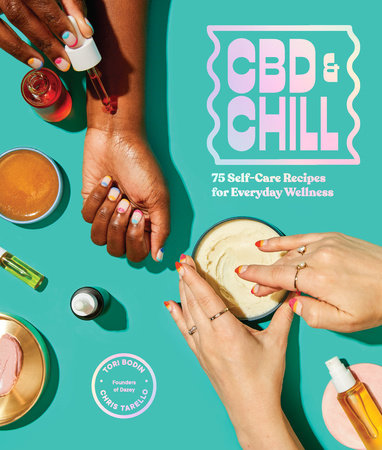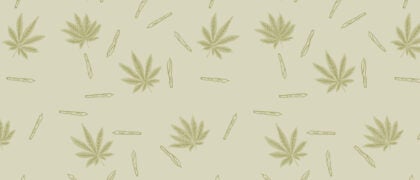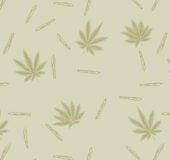Shopping for CBD You might have already started browsing online or at your favorite local retailers for CBD, only to find the product options overwhelming. At the time of this book’s publication, there are still no official labeling requirements or guidelines for CBD products. While many of us earnestly want to give customers the right information, the lack of uniformity across the industry makes it difficult for customers to compare products apples to apples. Many companies don’t even specify the type of CBD in their products or use misleading copy and marketing to convince consumers they’re purchasing CBD when in reality, they’re not. To make sure you’re buying a quality product best aligned with your #CBDgoals, we recommend shopping from established marketplaces (see Shopping List, page XX) and looking for a few key product characteristics.
Ready? Let’s get into it!
Breaking Down the Benefits of Isolate, Broad Spectrum, and Full Spectrum While there is no official categorization for types of CBD on the market, industry experts have adopted three terms to describe what’s out there today: isolate, broad spectrum, and full spectrum.
Isolate CBD is stripped-down cannabidiol containing no other residual cannabinoids—zero percent THC and zero percent any other plant compound.
Broad-spectrum CBD means that a select number of compounds have been extracted from the plant. Every broad-spectrum product may contain different compounds, so read the contents on the label carefully and thoroughly.
Full-spectrum (or
“whole plant”) CBD utilizes all the therapeutic compounds found in hemp, including essential, monounsaturated, polyunsaturated, and saturated fatty acids; all naturally occurring hemp cannabinoids; terpenes; plant sterols; natural vitamin E; and chlorophyll. The interactive synergy of these compounds is known as the “entourage effect,” a confluence of hemp goodness that increases the product’s therapeutic power and medical benefits. In the United States, this type of CBD contains less than 0.3 percent THC.
Imagine a party with only one attendee. That’s isolate. Imagine a small get-together where a few of your most fun friends canceled. That’s broad spectrum. Now imagine a party with over one hundred guests happily mingling and sharing their collective consciousness. That’s full spectrum.
Your personal preferences and needs will determine what type of CBD you choose. If you have a job that drug tests and your employer is not open to conversations on CBD consumption, you may want to go with isolate to avoid THC altogether. If you prefer a particular flavor or additive, you might find it in a broad spectrum product.
If you’re unsure and aren’t concerned about trace amounts of THC, which will have zero psychoactive effects, we highly recommend a full-spectrum CBD. You’ll experience the full therapeutic power of CBD.
Dispensaries vs. CBD Retailers Not all CBD is created equal. Based on where you’re shopping, your options for CBD will be very different. For the most part, there are two main categories of stores that sell CBD. First, there are cannabis dispensaries. But it’s rare to find hemp-derived CBD (less than 0.3 percent THC) in dispensaries, which are focused on selling marijuana-derived THC products unavailable at grocery stores and boutiques. So most of the CBD products sold in dispensaries contain enough THC to get you anywhere from mildly to “couch-lockingly” stoned. These products are labeled on a THC:CBD scale. A common ratio is 1:1, meaning the product contains equal parts THC and CBD. If you want to avoid even the slightest bit of psychoactive euphoria, be very cautious when shopping for CBD in dispensaries.
The second category of stores is everywhere else that sells CBD. The CBD you’ll find at your favorite boutique or online retailer is required by federal law to contain
less than 0.3 percent THC and therefore is defined as
hemp-derived. This means you shouldn’t get high or feel psychoactive effects, but to be hundo p,
always ask to see testing results. All reputable CBD sellers are transparent about what exactly is in their oil, so whether you’re shopping in person or online, do a quick Google search on the product first. An example of a product you would most definitely want to see testing results for would be one that claims to be full spectrum with 0 percent THC. This is a clear contradiction to established industry definitions. At best, the product is poorly labeled, but at worst the product may be trying to mislead or confuse you.
The Importance of Testing Results At Dazey, we post our testing results on our website and update our results for every new batch of oil we create. We test for heavy metals, solvents, pesticides, cannabinoid content, and terpene profile to let our customers know exactly what they’re getting. In the current unregulated state of the CBD industry, no company is
required to post testing results, but any respectable and reputable CBD company will gladly make their findings available to consumers. As a consumer, it’s imperative that you research before making a purchase. Make sure that you’re getting what the label claims it contains and that your CBD contains no nasty residual compounds from unethical production processes. Here’s what to look for in a product’s Certificate of Analysis (or COA):
· Purity: What is the product’s cannabinoid concentration?
· No heavy metals: All extracted CBD should be tested to ensure that lead, mercury, arsenic, and cadmium levels are below the action limit, which is how a laboratory determines if a product passes or fails a test.
· No pesticides: Each state has different laws for pesticide testing. Although ingestion in small amounts may not cause immediate health issues, long-term exposure is linked to a variety of serious illnesses. When checking a COA, confirm that the report does not show “fail” for any tested pesticides.
· No residual solvents: Confirm that the product you’re purchasing doesn’t have excessive levels of residual solvents left behind from extraction.
Deciphering Labels When you’re reading a CBD product label, look for these key items:
●
Bottle color: Sunlight can degrade CBD. High exposure to ultraviolet light and oxygen can rapidly break down organic matter like cannabinoids, so it’s important to buy CBD products stored in dark or solid-color containers. Frosted glass is not ideal for storing CBD, but as long as you keep it in a cool, dark place, the oil should be okay.
●
Potency: It’s essential to understand exactly how much CBD you’re buying. First, determine the size of the container and the total milligrams of CBD in the product—the front label should clearly state this. Our oil comes in a fifteen-milliliter bottle with three different potencies to choose from: three-hundred fifty milligrams, seven hundred milligrams, and one thousand milligrams. These amounts represent the total CBD content in milligrams per bottle. It can get confusing when you see two bottles of different sizes—one fifteen milliliters, the other thirty milliliters—that both contain one thousand milligrams of CBD. Both bottles contain the same total CBD content, but the thirty-milliliter product is actually less concentrated. In other words, the thirty-milliliter bottle contains less CBD per milliliter, so you would need to take twice as much of the CBD in the thirty-milliliter bottle to equal the same dose from the fifteen-milliliter bottle.
●
Flavors or additives: It’s also important to know every ingredient in the product. Some CBD products, such as gummies, obviously will contain food ingredients such as pectin or syrups, and every CBD oil will be blended with some type of carrier oil, such as coconut, olive, or even hemp seed. However, with tinctures, additional additives might not be so obvious. For example, some CBD oil tinctures contain added flavors, sweeteners, preservatives, or essential oils. Read the ingredients panel carefully and confirm that the oil is safe for consumption—as opposed to topical use—and that it only contains ingredients you feel good about.
●
Extraction method: Two main methods are used to extract CBD oil today: CO2 extraction, in which supercritical carbon dioxide pulls compounds from plants, and ethanol extraction, in which cannabis is soaked and then filtered to purge the alcohol from the extracted material. Ethanol extraction has been around for almost a century. There are detailed reports of ethanol extracted cannabis tinctures being sold in apothecaries in 1937. CO2 extraction was developed more recently and is also the backbone of the beer industry as the extraction method of choice for hops. Let’s take a look at a few differences between the two methods:
○ CO2 preserves native terpenes and can be more cost-effective at scale. CO2 is considered the cleanest, safest, and most cutting-edge method of extraction. For this reason, CO2 processors are deemed to have more long-term viability and survivability in the market as more and more consumers care about how products are made.
○ Ethanol has a lower price of entry, costs less to use, and produces a consistently high yield. Terpenes have a high probability of burning off, making this extraction method a viable choice for edibles and topicals.
Which method is better? It’s up for debate—each has its pros and cons. It really comes down to what processors want in a final product. If taste and whole-plant compounds are a priority or if tinctures are the target product, CO2 is the favored method.
●
Type of CBD: Does this product contain isolate, broad-spectrum, or full-spectrum CBD?
●
Origin: Where was the CBD sourced? Was the industrial hemp grown in the United States or imported? With the booming popularity of CBD, it isn’t difficult to find domestically grown and extracted products. As more US-based players enter the CBD marketplace thanks to the 2018 Farm Bill, many international sellers are skirting the risk and forgoing importing to the states. That said, it’s still possible to find imported CBD on some shelves as China and Canada are the top two producers of hemp, with the United States coming in third.
Understanding Terpenes Aroma is tied to pretty much all of our experiences. Do you have a memory of a captivating plant? The way it smelled as the wind wafted its aroma under your nose? That scent was most likely a plant terpene—an aromatic chemical produced by many plants, including ginger, cinnamon, and hemp. Terpenes are the pungent oils that give cannabis its distinctive aroma and taste. There are over one hundred identified terpenes, and each strain of cannabis has a unique terpene profile, resulting in a unique user experience.
Because terpenes can interact with the other plant compounds present in cannabis, they’re crucial to the entourage effect. Terpenes bind to the same receptors that CBD binds to and influence those receptors’ chemical output. So when it comes to efficacy, you should consider terpene, as well as cannabinoid, content. Most cannabis research has focused on cannabinoids, but recently scientists have begun to study and understand the intricacies and influences of terpenes.
Common terpenes found in cannabis:
● Myrcene: Musky, earthy. Helps to encourage sleep, relaxation. Also found in mango, lemongrass, thyme, and hops.
● Limonene: Citrus. Relieves stress and elevates mood. Also found in fruit rinds, rosemary, juniper, and peppermint.
● Pinene: Pine. Anti-anxiety, increases alertness, counteracts THC effects. Also found in pine needles, rosemary, basil, and dill.
● Caryophyllene: Peppery and woody. Relieves stress. Also found in black pepper, cloves, and cinnamon.
● Linalool: Floral. Enhances mood, relaxation. Also found in lavender.
● Humulene: Woody, earthy. Anti-inflammatory. Also found in hops, coriander, cloves, and basil.
● Ocimene: Sweet, herbal. Antibacterial, antifungal, decongestant. Also found in mint, parsley, pepper, basil, mangoes, orchids, and kumquats.
● Terpinolene: Piney, floral, herbal. Relaxing. Also found in nutmeg, tea tree, apples, and lilacs.
CBD Delivery Methods CBD comes in all shapes and sizes. Literally. You can find CBD in almost anything these days, from tinctures and drinks to patches and suppositories. Determining how you will use CBD comes down to preference. For the purpose of this book, we’ll be using CBD in a bottle with a calibrated dropper for precision, but there are plenty of options on the market.
Tincture: Any drop or spray form delivered directly into the mouth. This is the second-quickest way to absorb CBD and is definitely the most popular. Users can easily quantify their dose because tinctures usually have calibrated droppers. Tinctures also offer the most CBD per volume compared to other methods.
Topical: The most cautious way to use CBD, this includes a wide array of products, from balms and lotions to rubs and patches. Topicals are effective in relieving muscle soreness but require liberal use to feel the effects, so a regular application can get expensive.
Edible: Almost everything these days has a CBD variant. This is the tastiest way to dose, but the CBD in edibles takes longer to absorb through your digestive system.
Vape/smoking: This is the fastest way to feel the effects of CBD, but it is difficult to control dosage. If you choose to vape your CBD, it’s important that you find a reliable source. There have been numerous vaping-related illnesses and deaths from subpar or tampered products. The FDA has released this statement regarding vaping: “Consumers who choose to use any vaping related products should not modify or add any substances such as THC or other oils to products purchased in stores and should not purchase any vaping products, including those containing THC, off the street or from other illicit channels.”
Copyright © 2020 by Chris Tarello and Tori Bodin. All rights reserved. No part of this excerpt may be reproduced or reprinted without permission in writing from the publisher.








